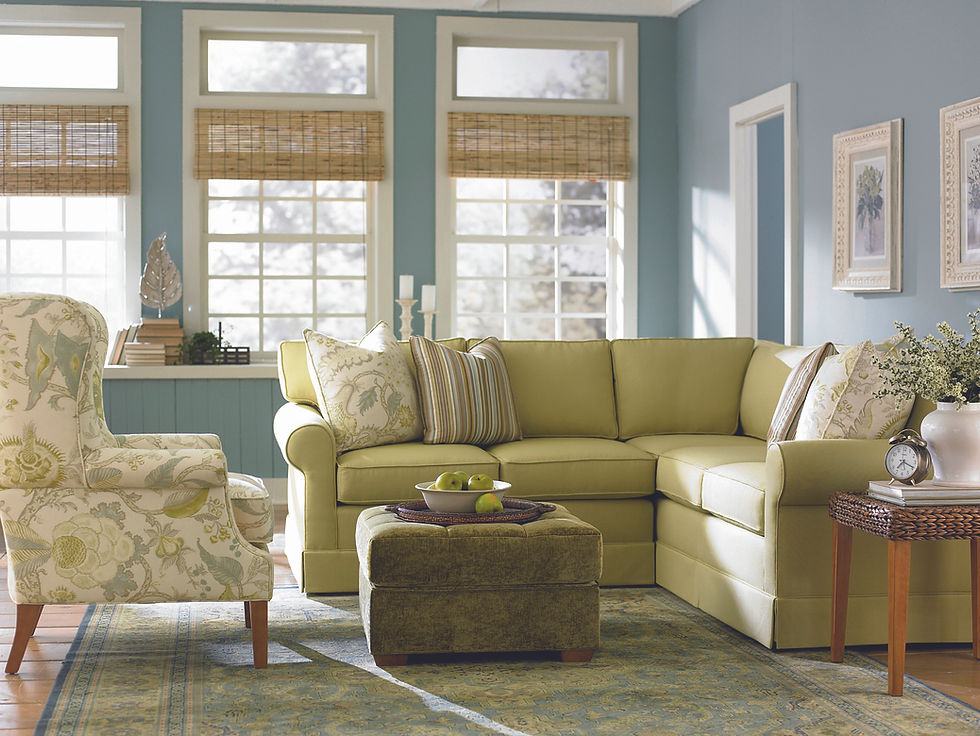All About Tile
- Angela Wilson Lee

- Jan 13, 2020
- 4 min read
Updated: Feb 17, 2020
Tile is an often overlooked, yet incredibly significant and versatile aspect of interior design. It can definitely make or break a room plan. If you're a tile novice, here is a handy guide to everything you need to know about tile in the home and beyond.
Tile and stone is a building material that has been around for centuries, proving to be a sturdy, beautiful and reliable resource for use in both residential and commercial spaces. It has also undergone quite the revival in the last few years. With the help of emerging technology, manufacturers are creating tile that would not have been possible decades ago.

Applications
We traditionally think of tile for flooring and bathroom finishes, but it can be used for so much more. Here are just a few of the possibilities:
• Flooring
• Walls
• Ceilings
• Showers / Baths
• Countertops
• Pools
• Backsplashes
A good tile backsplash can create a defining and attention-grabbing statement in your kitchen! Your interior designer can work out the best tile finish to match your kitchen walls, countertops, and cabinetry. Here are a few fantastic backsplashes I've done for clients.
Types of Tile

Porcelain: This classic white, subtly translucent ceramic isn't just for traditional homes. Advances in technology are allowing manufacturers to design porcelain in more ways than ever, even mimicking other popular finishes like marble, glass, stone and even wood. This tile lasts a lifetime, and can even be used outdoors.

Glass: I know what you're thinking, why would I use glass tile in my home? Won't it shatter? Quite the opposite! Glass tile is fired at such high temperatures that it is actually one of the most durable, breakage-resistant tile materials you can use in your home. Of course, I'm a huge fan. Glass is so glossy and sleek that you can't help but love it. My favorite areas to use this tile are in showers and backsplashes.

Metal: Using metal tile on entire walls is a trend that's really taking off in contemporary spaces. This material offers a unique finish. More often however, metal will be used as a small intricate accent in ceramic or stone tilework, as it complements the material beautifully.

Natural Stone: Natural stone includes marble, limestone, slate, and granite. These materials have been used in tilework since the very beginning, and continue to withstand the test of time. If you're looking for a natural and organic finish, this should be the material you gravitate toward. They work well for countertops, showers and outdoor applications.

Trim and Moulding
Trim and moulding accents are the finishing touch on any good tile application, and should not be overlooked. They ensure a seamless edge on your walls, flooring or shower, and can complement your tile with a contrasting color or finish. Here are the most popular types:
Base Moulding: Covers the joint between the wall and the flooring, providing a clean finished look for interior spaces.
Bullnose Trim: This trim has a rounded edge to create the illusion of the tile forming seamlessly into the wall.
Chair Rail Moulding: Traditionally used to protect a wall from chair scuffs, this trim is lined on a wall horizontally, 28-32" above the ground. This moulding can be used in conjunction with tile above or below.
Cove Base: Most frequently used trim at the base of walls or edge of countertops.
Crown Moulding: Use to cover the joint between the wall and ceiling.
Liners: Trim liners help break up wall patterns for a decorative accent edge. These are often used horizontally in kitchen backsplashes and bathrooms.

Tile Mosaic
Tile should never be boring! Contrasting tiles can be arranged in all sorts of fun patterns from the most basic, to artistic and intricate. It takes a keen eye for design to craft these tile combinations, but a designer can surely help you make the right choice.
Cleaning and Maintenance
So, you have your beautiful tile floors and kitchen backsplash. Now what? Here are some pro tips for maintaining your tile so that it lasts a lifetime.
1. Use a damp mop to clean up spills. Ring out your mop before use so that the spill doesn't spread or soak into the tile.
2. Use wet mopping daily to clean tile floors with a diluted detergent solution.
3. Allow 5-10 minutes for detergent solution to remain on the tile. The solution must be given time to activate and break down any dirt and oil on the surface. Generally 5-10 minutes.
4. Rinse thoroughly with clean, clear water. Rinsing is a critical step in the maintenance procedure. Remove the rinse water with a wet vacuum, dry mop or toweling. If dirty detergent solution is not removed and is allowed to dry on the surface, a coating will form which is very difficult to remove.
5. Tile walls, showers backsplashes and more require minimal cleaning with mild detergent and a damp towel or mop. Mold can grow on the grout in between tile, so take care to clean and dry your tile on a regular basis.
Now that you know the tile basics, it's time to go forth and get started on your next home project. Wilson Lee Interiors can help you find the best tile for your space and coordinate it with your existing finishes and furniture. Give us a call for a consultation, and we can start helping you invest in yourself and your home's long term happiness.
With Joy,
Angela Wilson Lee










Comments